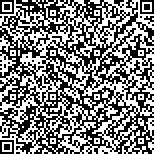| 引用本文: |
余婧萍,宋祯彦,李富周,贺春香,成绍武.芍药苷通过促进细胞自噬抑制H2O2诱导的SH-SY5Y细胞的氧化损伤[J].湖南中医药大学学报,2020,40(6):653-659[点击复制] |
|
| |
|
|
| 本文已被:浏览 2230次 下载 537次 |
| 芍药苷通过促进细胞自噬抑制H2O2诱导的SH-SY5Y细胞的氧化损伤 |
| 余婧萍,宋祯彦,李富周,贺春香,成绍武 |
| (湖南中医药大学, 湖南 长沙 410208;中西医结合心脑疾病防治湖南省重点实验室, 湖南 长沙 410208) |
| 摘要: |
| 目的 研究芍药苷对氧化损伤细胞模型的抗氧化作用和细胞自噬的调控作用。方法 以H2O2诱导的SH-SY5Y细胞系构建氧化损伤模型。实验设对照组,模型组,芍药苷低、中、高剂量组。采用MTT法检测芍药苷干预后细胞存活率;2',7'-二氯荧光素二乙酸酯(DCFH-DA)检测细胞内ROS水平;Ad-mCherry-GFP-LC3B融合蛋白腺病毒检测细胞自噬水平;Western blot检测细胞自噬相关蛋白LC3及SQSTM1/p62的表达水平。结果 250 μmol/L H2O2干预24 h后SH-SY5Y细胞存活率约55%为模型复制条件。芍药苷低、中、高剂量干预后,与模型组比较,细胞存活率呈剂量依赖性上升(P<0.05)。与对照组相比,模型组细胞内ROS水平升高,差异具有统计学意义(P<0.05);自噬溶酶体形成受阻;LC3Ⅱ及SQSTM1/p62在细胞内表达升高,差异具有统计学意义(P<0.05)。芍药苷的干预可促进自噬小体与溶酶体结合;与模型组比较,芍药苷中、高剂量组细胞内ROS水平显著下调(P<0.05);细胞内LC3Ⅱ及SQSTM1/p62的表达降低,差异具有统计学意义(P<0.05)。结论 芍药苷可通过促进细胞自噬改善H2O2诱导的SH-SY5Y细胞氧化损伤。 |
| 关键词: 芍药苷 SH-SY5Y细胞 细胞自噬 LC3 SQSTM1/p62 氧化应激 过氧化氢 |
| DOI:10.3969/j.issn.1674-070X.2020.06.003 |
| 投稿时间:2020-04-20 |
| 基金项目:国家自然科学基金面上项目(81774129);湖南省自然科学基金面上项目(2018JJ2296,2019JJ50441);湖南省中医药管理局科研项目(2018025);湖南省教育厅优秀青年科研项目(18B246)。 |
|
| Paeoniflorin Ameliorating H2O2-Induced SH-SY5Y Cells Oxidative Damage by Promoting Autophagy |
| YU Jingping,SONG Zhenyan,LI Fuzhou,HE Chunxiang,CHENG Shaowu |
| (Hunan University of Chinese Medicine, Changsha, Hunan 410208, China;Key Laboratory of Hunan Province for Integrated Traditional Chinese and Western Medicine on Prevention and Treatment of Cardio-Cerebral Diseases, Changsha, Hunan 410208, China) |
| Abstract: |
| Objective To investigate the antioxidant effect of Paeoniflorin on oxidative damage cell model and the regulation of autophagy. Methods Methyl thiazolyl tetrazolium (MTT) assay was used to determine the cell activity and to construct the H2O2-induced cell damage model with the optimal time and dose. A control group, model group and low-dose, medium-dose and high-dose paeoniflorin groups were set up. MTT method was used to detect cell viability after PF intervention. 2',7'-Dichlorofluorescin diacetate (DCFH-DA) was used to detect ROS. Ad mCherry-GFP-LC3B fusion protein was used to detect cell autophagy, and western blot was adopted to detect the expression level of LC3 and SQSTM1/p62 after the intervention. Results After 24 h of intervention with 250 μmol/L H2O2, SH-SY5Y cell viability was about 55%, which was the copy modeling condition. After low, medium and high-dose paeoniflorin intervention on H2O2 damaged cell model, compared with the model group, the cell viability showed a dose-dependent increase (P<0.05). Compared with the control group, the intracellular ROS level of the model group increased, and the difference was statistically significant (P<0.05); autophagolysosome formation was blocked; the expression of LC3Ⅱ and SQSTM1/p62 increased, and the difference was statistically significant (P<0.05). The intervention of paeoniflorin can promote the combination of autophagosomes and lysosomes; compared with the model group, the level of ROS in the cells of the medium and high dose groups was significantly reduced (P<0.05); the expression of LC3Ⅱ and SQSTM1/p62 was reduced, and the difference was statistically significant (P<0.05). Conclusion Paeoniflorin can improve H2O2-induced oxidative damage of SH-SY5Y cells by promoting autophagy. |
| Key words: paeoniflorin SH-SY5Y autophagy LC3 SQSTM1/p62 oxidative stress hydrogen peroxide |
|

二维码(扫一下试试看!) |
|
|
|
|




